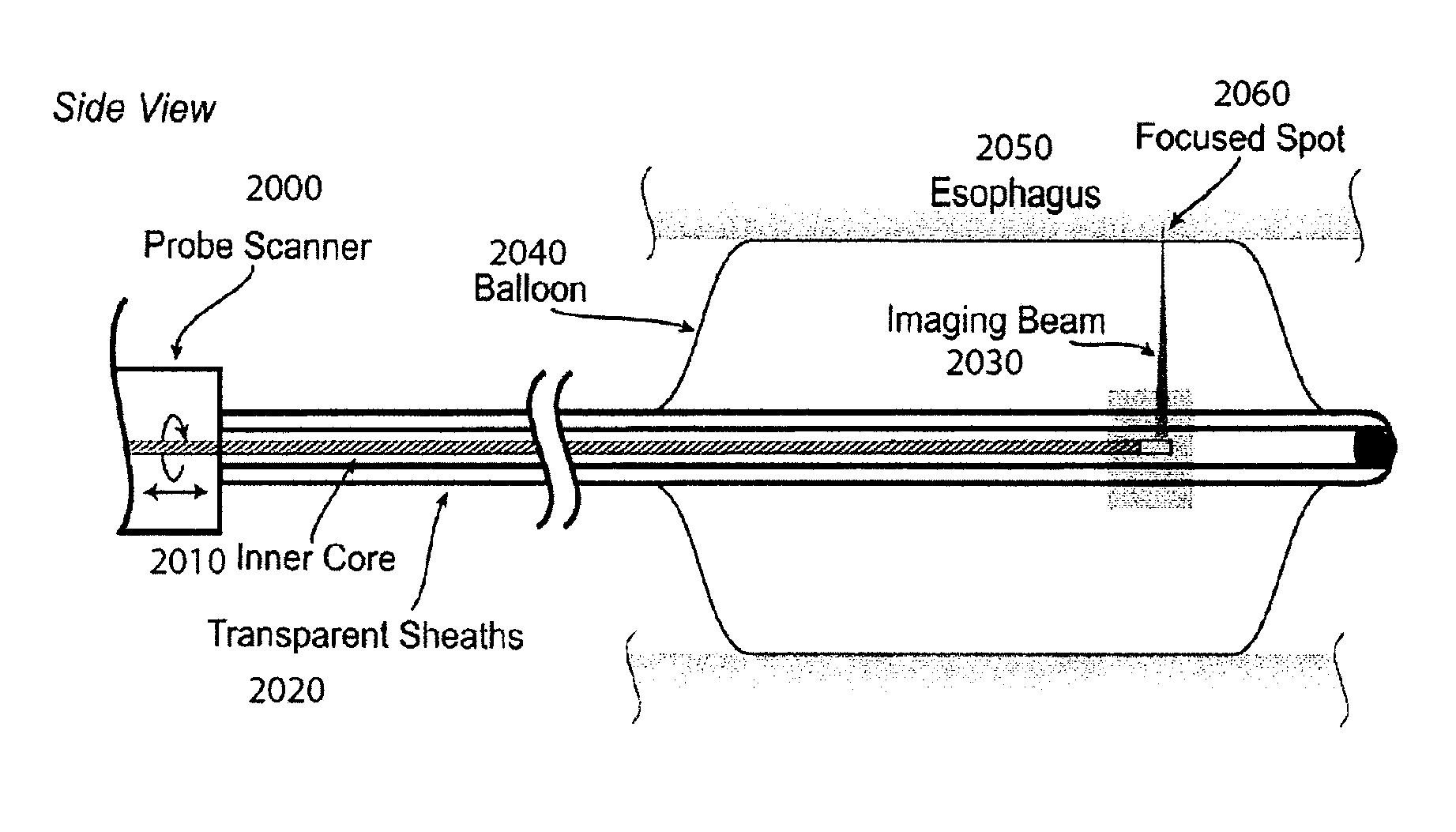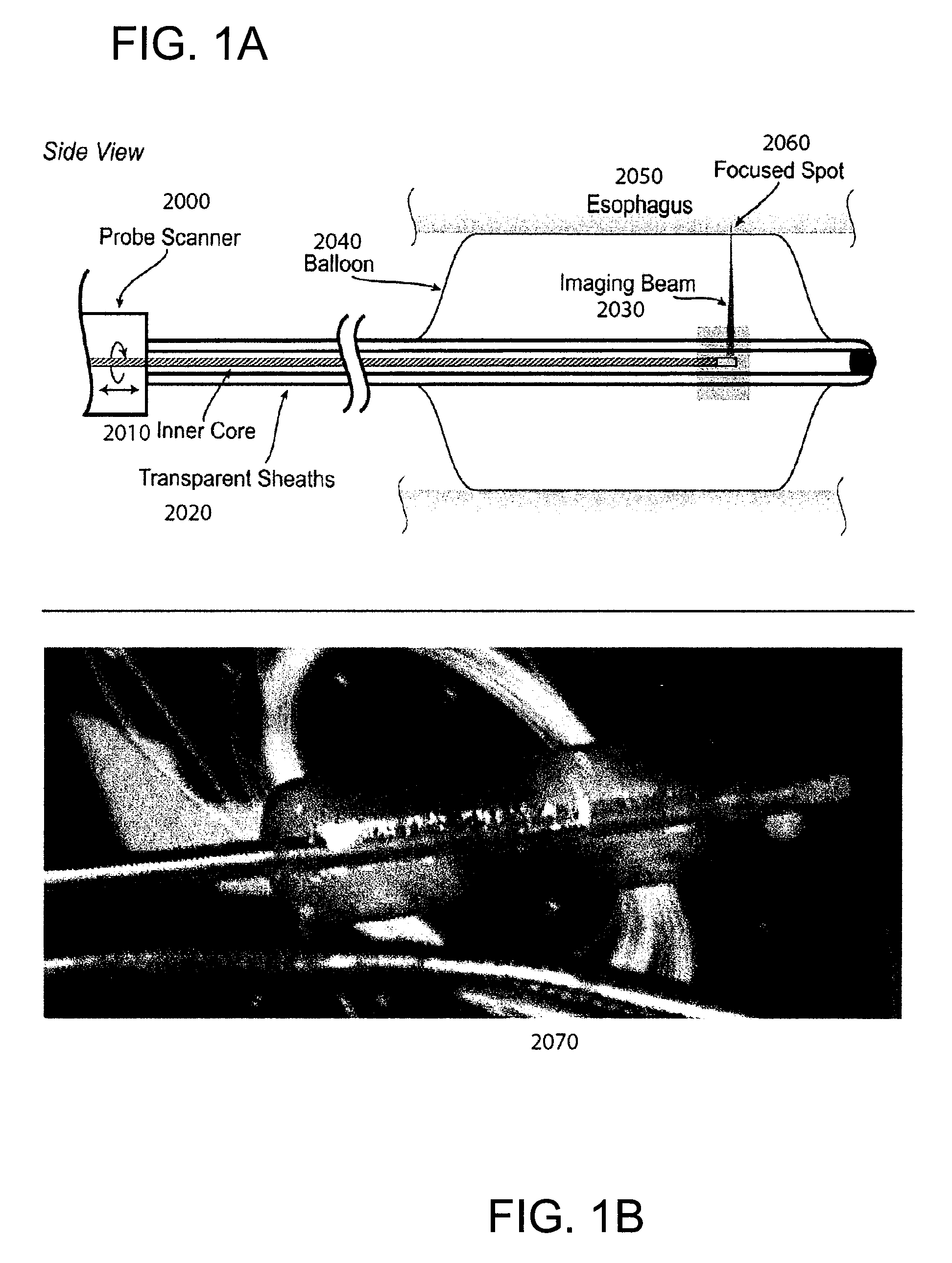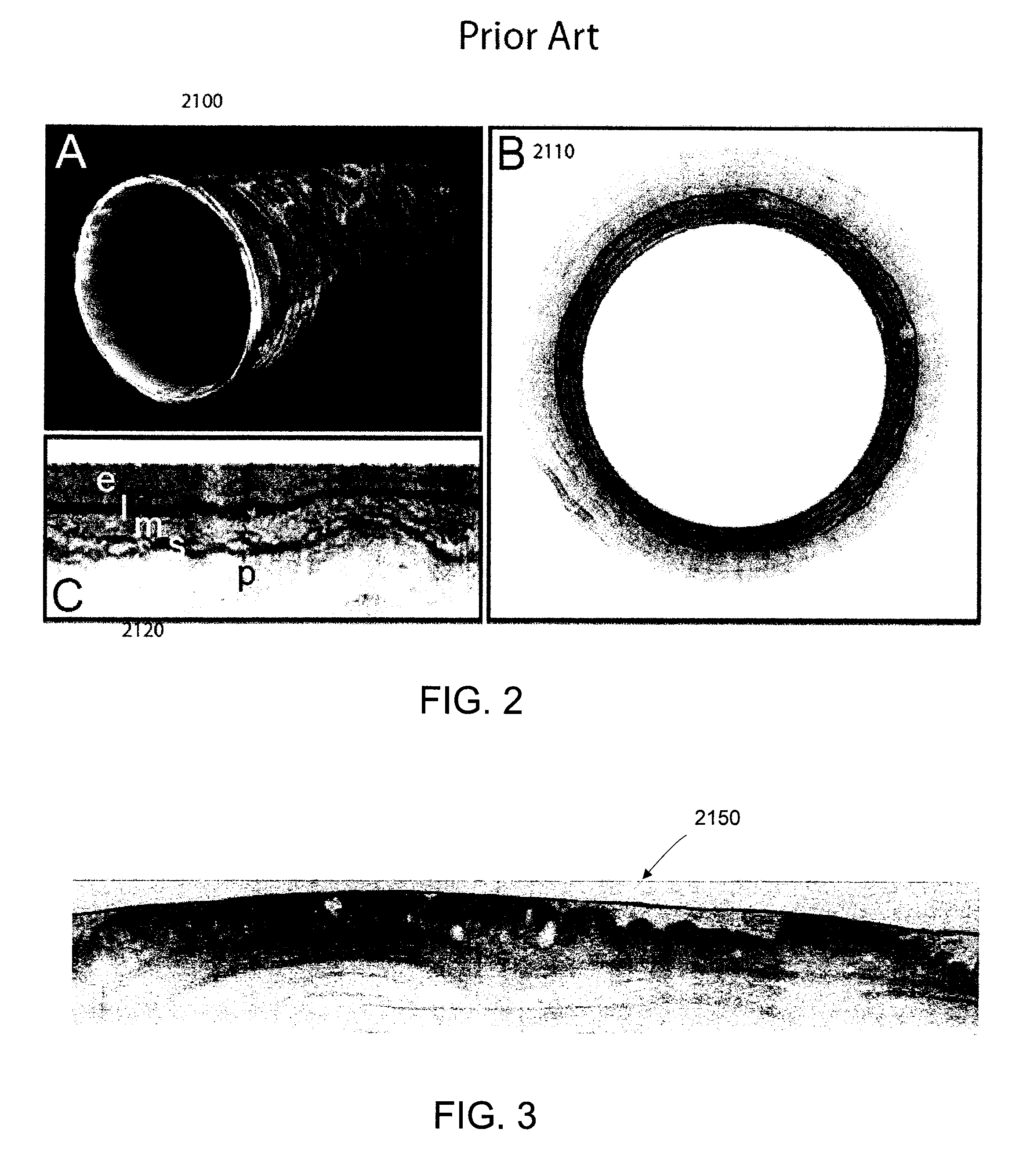Methods and systems for providing electromagnetic radiation to at least one portion of a sample using conformal laser therapy procedures
a laser therapy and electromagnetic radiation technology, applied in the field of methods and systems for providing electromagnetic radiation to at least one portion of a sample using conformal laser therapy procedures, can solve the problems of inability to accurately control and guide the treatment depth, disease recurrence, and less than perfect use of laser therapy in certain clinical applications
- Summary
- Abstract
- Description
- Claims
- Application Information
AI Technical Summary
Problems solved by technology
Method used
Image
Examples
Embodiment Construction
[0059] An exemplary embodiment of the system and method according to the present invention for controlling and localizing therapy can be based on a thermal excitation delivered by a conventional, spatially scanned laser beam. For example, in the absence of photochemical or phase transition processes, the laser energy absorbed by tissue can be substantially or entirely converted to a temperature rise, as described in publication 33 identified below. For exposure durations greater than approximately 10 ms, temperatures in excess of 60-70° C. generally can lead to irreversible protein denaturation and cell death irrespective of duration, as described in publication 34 identified below. When the energy is absorbed, it can be subject to a spatial redistribution by a thermal diffusion. In 1983, as described in publication 35 identified below, an exemplary concept was described which provided that spatially confined microsurgical effects (selective photothermolysis) can be achieved by the ...
PUM
 Login to View More
Login to View More Abstract
Description
Claims
Application Information
 Login to View More
Login to View More - R&D
- Intellectual Property
- Life Sciences
- Materials
- Tech Scout
- Unparalleled Data Quality
- Higher Quality Content
- 60% Fewer Hallucinations
Browse by: Latest US Patents, China's latest patents, Technical Efficacy Thesaurus, Application Domain, Technology Topic, Popular Technical Reports.
© 2025 PatSnap. All rights reserved.Legal|Privacy policy|Modern Slavery Act Transparency Statement|Sitemap|About US| Contact US: help@patsnap.com



